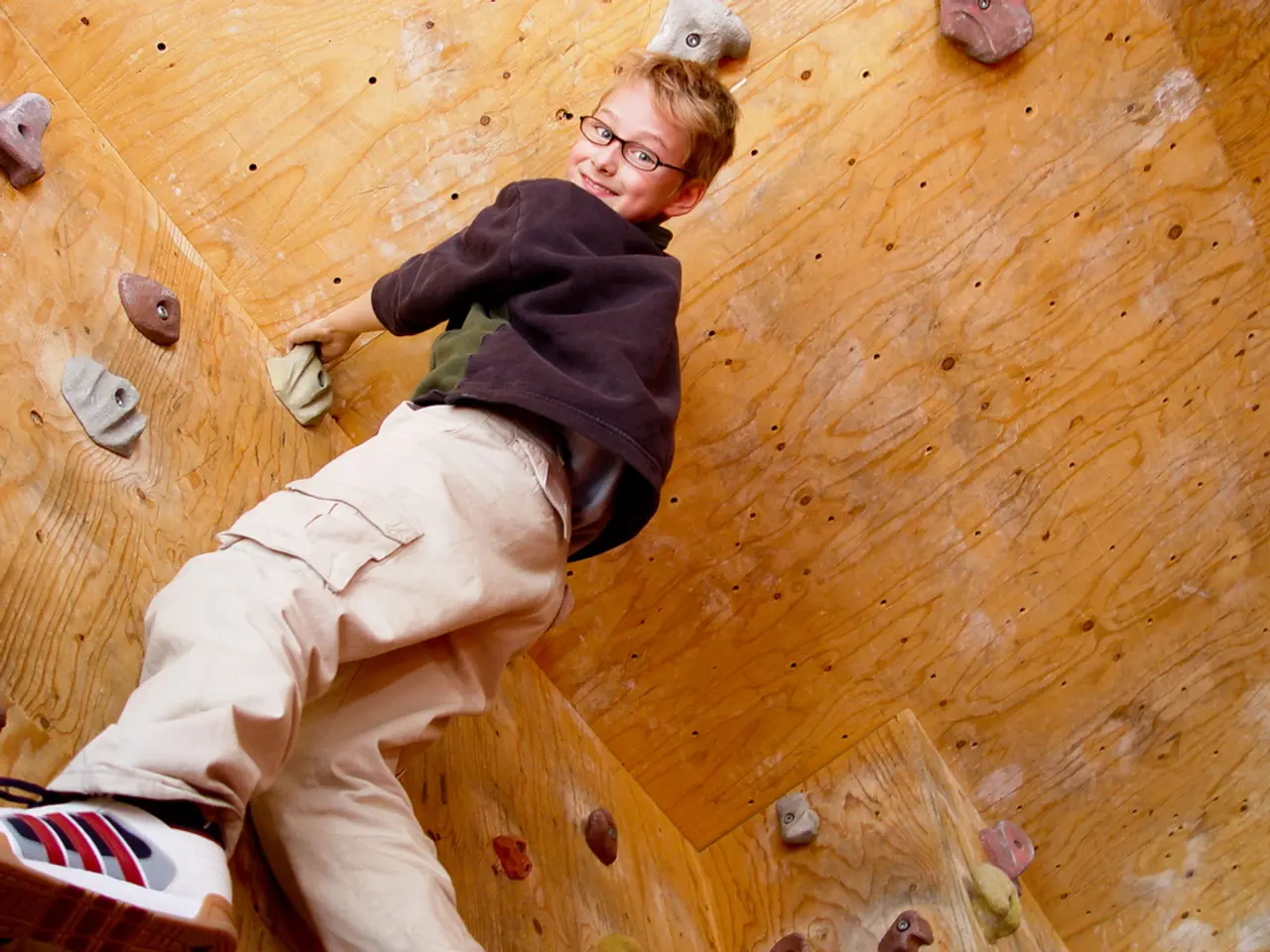Strategies for Encouraging Desirable Actions through Incentivization and Rewards
In the realm of education, creating a classroom where students not only learn but thrive is the ultimate goal. Positive reinforcement, a proven strategy, can help transform classrooms into vibrant spaces where students love to learn, take on new challenges, and strive for more.
One effective approach is a system where students earn small rewards for demonstrating good behaviour and academic success. For instance, a reward of 10 cents for every three points earned can encourage positive behaviour and academic success [1]. Research supports this, showing that regular rewards for small tasks can make work more enjoyable, improve grades, and foster a positive learning environment [2].
Technology can boost the power of positive reinforcement. Teachers can use it to create fun reward systems, digital badges, or games to celebrate students' success [3]. By making learning interactive and engaging, students are more likely to remain focused and motivated.
Evidence-based strategies for implementing positive reinforcement include immediate and clear reinforcement, such as verbal praise, tokens, or small treats, given immediately after appropriate behaviours. This makes it clear which actions are desirable [4]. Building strong relationships with students, showing genuine interest and respect, also plays a crucial role. Positive rapport increases motivation to meet expectations [4].
Creating predictable visual routines and transition cues is another effective strategy. This helps students anticipate transitions, reducing behaviour problems [5]. Maintaining a positive-to-corrective interaction ratio of at least 5:1 is important to promote a positive environment and strong student-teacher relationships [4][5].
Encouraging participation from all students, not just the most confident, fosters inclusion and reinforces positive engagement [3]. Pre-teaching and reteaching expected behaviours, giving transition warnings, and making routines clear and visual are essential to help students learn and maintain good behaviour [5]. Programs like Positive Behavioral Interventions and Supports (PBIS) provide a research-backed framework for classroom behaviour management [3][4].
Positive reinforcement offers numerous benefits. It can help students get along better with others, improve their grades, and create a safe space where everyone's progress is valued [6]. By celebrating all successes and encouraging broad participation, educators can foster a positive learning environment that encourages good behaviour and reduces bad habits [3].
Using different types of positive reinforcement—verbal praise, stickers, classroom reward systems, and special privileges—helps motivate and celebrate student achievements, fostering a positive classroom atmosphere [1]. Adding team rewards and friendly competition can make students feel like they're part of a team, keeping them engaged and making them feel accomplished [7].
By being thoughtful and understanding the basics of positive reinforcement, educators can make learning a supportive and motivating place for students. The use of a reward system that focuses on effort and progress can boost student motivation and interest in learning [8]. Setting up a clear reward system is key, and letting students pick their own rewards can make them more excited to learn and behave well [9].
In conclusion, positive reinforcement is a powerful tool for educators. By implementing strategies such as immediate and clear positive reinforcement, building genuine relationships, creating predictable visual routines, maintaining a positive-to-corrective interaction ratio, celebrating all successes, encouraging broad participation, pre-teaching expected behaviours, and implementing structured programs like PBIS, educators can create a supportive and motivating learning environment that encourages good behaviour and academic success.
In the process of implementing positive reinforcement strategies, educators can build respectful relationships with students by showing genuine interest and remembering to celebrate each student's success. Regular education and self-development about the principles of science regarding positive reinforcement can help teachers create more effective and engaging reward systems. By incorporating lifestyle changes like adhering to clear and predictable boundaries in the classroom, educators can promote a thriving learning environment that respects and values all students' progress.




